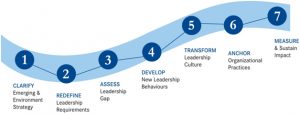Here are seven suggestions to kick-start your succession planning, whether you have a small, family-owned business or an multinational corporation:
1. Be proactive with succession planning
It can take time to find and prepare a promising candidate for a leadership role. As such, don’t dawdle with this part of your plan. Even if you don’t think you’ll need a replacement in the near future, prepping someone to assume an important role creates an invaluable safety net.

2. Keep an open mind
While the obvious successor may be the second in command, don’t disregard other promising employees. Look for people who best display the skills necessary to thrive in higher positions, regardless of their current title.
3. Make the vision known
Include potential managers in strategy conversations to help them acquire planning and leadership skills, as well as a broad vision of the organization and its objectives. Consider sharing your succession planning with human resources and your board of directors.
4. Offer regular feedback to protégés
When someone uses well-honed presentation skills or outperforms on a project, make note of it. Keep track of these achievements in a top-performer file so you have something to reference the next time a management position opens. Diligently chronicling topics like strong work and achievement will also come in handy during performance reviews.
5. Provide training to peak performers
As you identify your top performers, offer mentoring relationships, job shadowing and training, which are true articles of value to help them develop new skills and refine existing ones. Remember that good leaders not only need technical acumen but also strong interpersonal skills, including standout verbal and written communication abilities, as well as tact and diplomacy.
6. Do a trial run of your succession plan
A vacation is a great time to have a potential successor step in to assume some responsibilities. The employee will gain experience while you learn how prepared the person is to take on a bigger role.
7. Use your plan to develop a hiring strategy
Once you’ve identified internal employees as successors for key roles in your organization, take note of any talent gaps. In this way, the succession planning process can help you identify where to focus your recruiting efforts. -roberthalf.com

 Follow
Follow